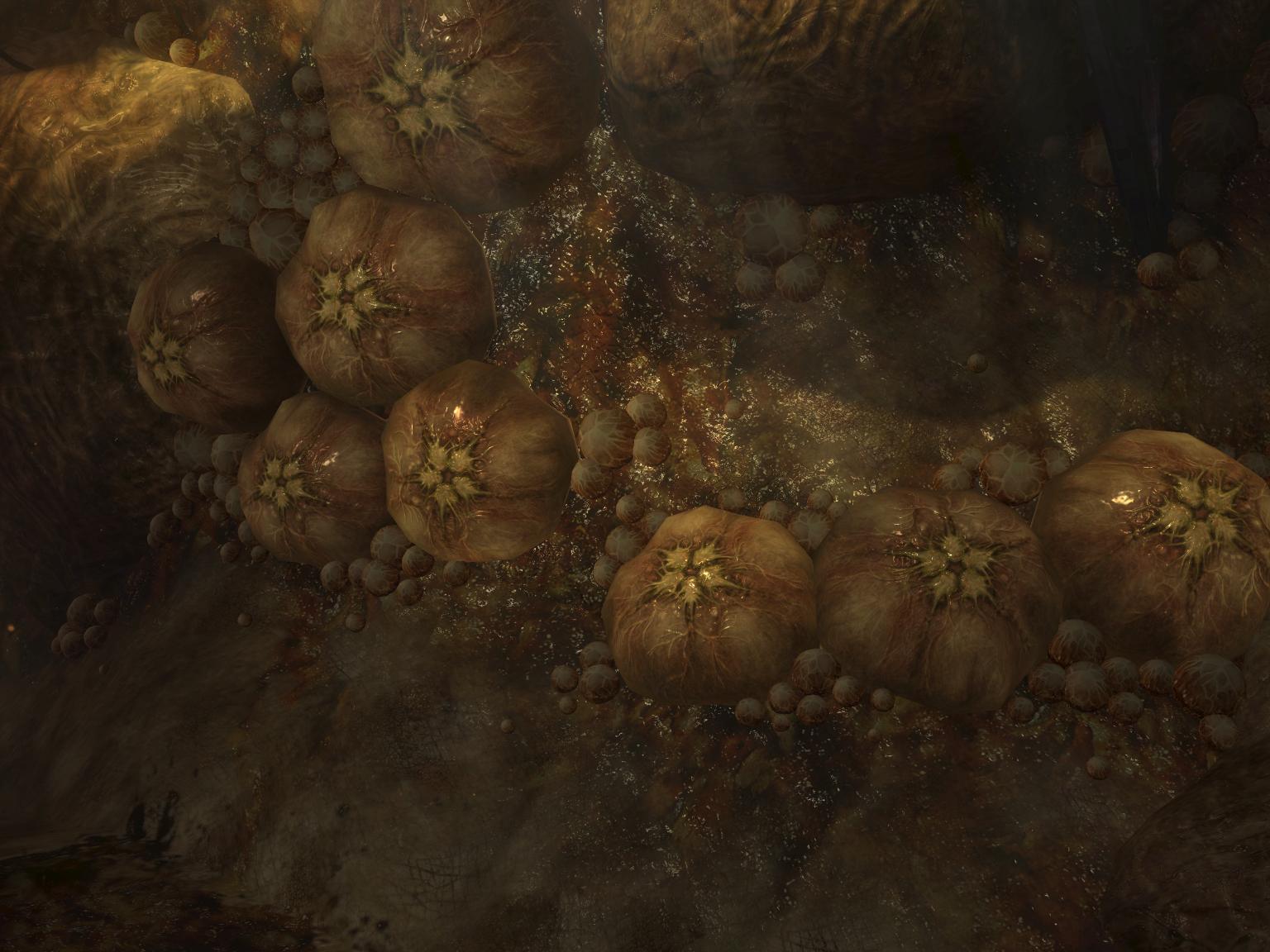
The infection form controlling a host body does not feel pain or fear, though the host is able to feel the physical effect of attacks rendered upon it. In extremely rare circumstances, a victim may remain fully aware of their present status, unable to do much but watch as their body is controlled by an outside force. With sapient hosts, the victim may still attempt to cry out from what remains of its mouth and throat even while being controlled, though it is also possible for the infection form to do so using the host's thoughts and memories as a psychological weapon. Some combat form super cell growths take on a more chitinous nature, akin to armor plating, helping protect the combat form from enemy attacks. Until the body is completely subsumed by super cell growth, these appendages are maintained as an impromptu central nervous system. Even once the FSC has taken control of the victim, the controlling infection form can often be seen buried within the victim, with the infection form's red sensory appendages poking out of the flesh. Spore-filled polyps also often cover the exterior of combat forms.
The flood halo full#
The Flood Super Cell is able to arrange itself to mimic any organ needed to keep the host working, while other internal organs are replaced with accretions that function as support lattices containing a sickly green liquid full of spores in suspension. Any damage that the combat form receives ultimately creates more vectors of infection as the chunks of infected flesh it leaves behind are scattered throughout the environment. Infection forms will often augment a host's body to better serve as a living weapon, and damage taken during fighting and infection can be repaired by the controlling infection form, though the combat form is ultimately disposable. With sapient hosts, some limbs and sensory organs are preserved in the transformation, and are used to operate tools, equipment, weapons, vehicles, and even ships. As this process occurs, bodies take on the appearance and smell of decay. Once infected, the super cell begins to consume and convert sections of the host body, creating growths and new appendages of new super cell. Even if the infection form is removed, the injection of FSC into the generated wounds results in those wounds becoming spore-filled blisters, and the host cannot be saved from infection. Some hosts may be attacked and infected by multiple pod infectors. This process can be performed on living or recently-deceased hosts, though often results in the "death" of a living host prior to their re-animation once the FSC takes hold. Depending on the host in question, the pod infector will dislodge the host's bones and organs to make room for itself, resulting in extreme disfiguration such as dislocating the host's jaw or, in the case of infected Sangheili, completely snapping the neck. Typically, the pod infector makes its home within the chest cavity of the host life form, though depending on circumstance this is not always the case. When conventionally infected by a pod infector, the infector latches onto the host and dig into the host's flesh with a razor-sharp barb-like appendage, injecting the FSC and proceeding to burrow themselves within the host. However, infection by spore inhalation or infection form is extremely quick, with a host succumbing often in as little as a few seconds. Given the combat forms' preference for melee combat, this makes even non-fatal strikes a death sentence, though such infections may progress slowly. Īs Flood forms, including the combat form, naturally produce the Flood Super Cell (FSC), even being in contact with one can result in infection for an unprotected potential host. Some Flood structures such as the " launcher" specialize in firing clouds of spores at uninfected forces, causing them to succumb to the infection without any kind of infection form involved. By this point, the Flood presence makes up the majority of the terrain in the area, making contact with the Flood Super Cell and the naturally-generated spores an inevitability.

In more advanced stages of infection, the need for specific infection forms is decreased as the Flood-infected area converts to a Blightland or Flood hive. Flood outbreaks can often be caused by spores or other microbiological vectors entering the host body, or by contact with other forms that include Flood Seeders or Infesters.


Pathology Infection and creation Ĭombat forms are typically created when a pod infector is successfully able to enter a host's body, though this is not the only vector by which hosts can be infected.


 0 kommentar(er)
0 kommentar(er)
